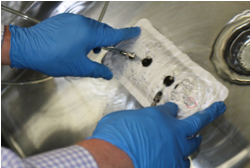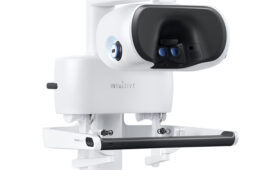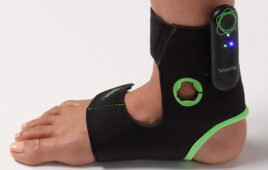
It is critical to choose a lab that matches or exceeds your standard for quality. Going the extra mile to find a lab with strict quality control measures and certified engineers can be the difference between having a product idly waiting and a product debuting on the market.
Editor’s Note: This article is written by Sarah Rosenblum from Packaging Compliance Labs.
FDA inspections cause major anxiety for most medical device manufacturers. While you may anticipate an FDA inspection at some point, many companies are caught off guard. This fault can lead to disasters. Millions of dollars can be wasted by having a recall on your medical device.
As the healthcare industry advances, so are the regulations. The FDA is scrutinizing medical device manufacturing practices more than any other time in history. For example, the FDA conducted nearly 2,000 onsite audits in 2015, an increase of almost 600 instances compared with 2008. This means that now is the time to be on your toes!
We did the research to learn the top findings of FDA warning letters in recent years. What we found is that the majority of FDA warning letters related to Production and Process Controls (P&PC) and Corrective and Preventative Action (CAPA) topics.
Both of these categories accounted for 32% of FDA warning letters:
• In the CAPA category, 34% was due to the failure to present corrective and preventative action.
• Another 29% of that category was because of complaint files.
• In the P&PC category, 16% was due to issues with process validation.
One of the best ways to impress an FDA inspector is by having a premium quality management system, such as one tailored to ISO13485. This will ensure that your company has robust processes and operates like a well-oiled machine. By defining all of your processes and procedures you are setting a standard that will show the FDA your commitment to quality.
While ISO13485 quality systems are common for medical device manufacturing, you may be surprised to learn that the standard does little to address packaging requirements as separately handled under ISO11607. This means that many MDMs have gaps related to packaging process validation, performance testing and shelf life claims. These areas likely won’t be highlighted during your next ISO audit. However, the FDA will drill down into packaging safety and effectiveness to a whole new level.
It’s important for MDMs to avoid this pitfall by ensuring robust packaging development and validation practices within the quality management system. Many medical device companies get excited about their product and invest all their time and resources into making it top quality. After the device is complete they think they are ready to go and simply need to throw the product in a box and send it. This oversight is one of the top reasons for FDA recalls related to sterility and packaging.
It doesn’t stop there—package testing to show compliance with FDA requirements must be done in a manner that is reliable. This can be accomplished in-house by performing Test Method Validations, or by using a certified outside validation lab (such as one certified to ISO17025). Most often companies choose to outsource testing to save on time and investment.
It is critical to choose a lab that matches or exceeds your standard for quality. Going the extra mile to find a lab with strict quality control measures and certified engineers can be the difference between having a product idly waiting and a product debuting on the market.


![A photo of the Medtronic GI Genius ColonPro polyp detection system flagging a potential sign of colon cancer during a colonoscopy. [Photo courtesy of Medtronic]](https://www.medicaldesignandoutsourcing.com/wp-content/uploads/2024/04/Medtronic-GI-Genius-doctors-268x170.jpg)

